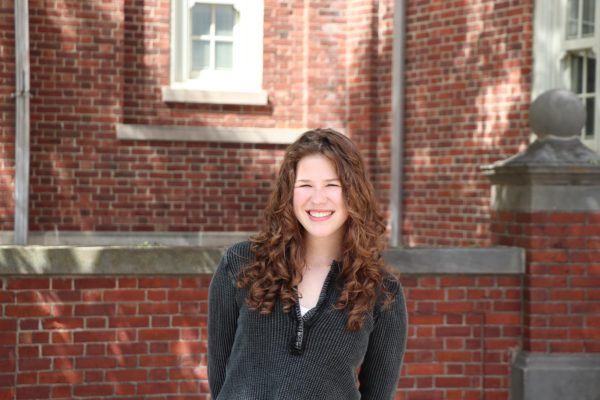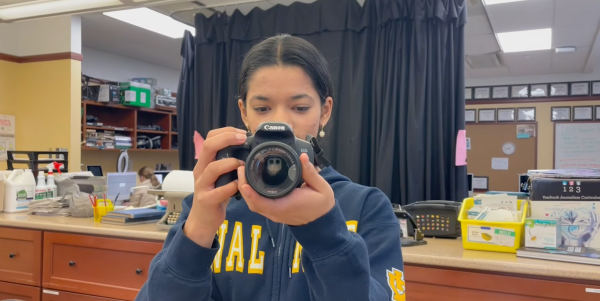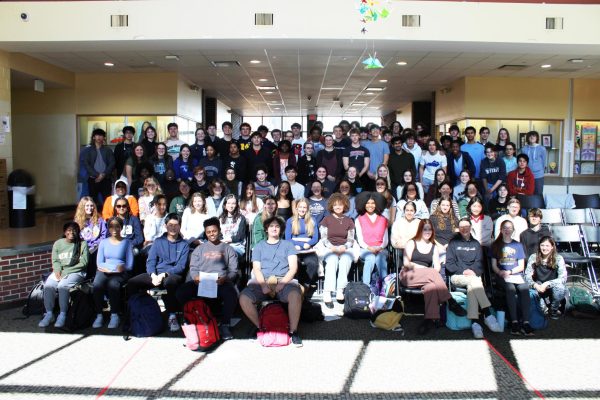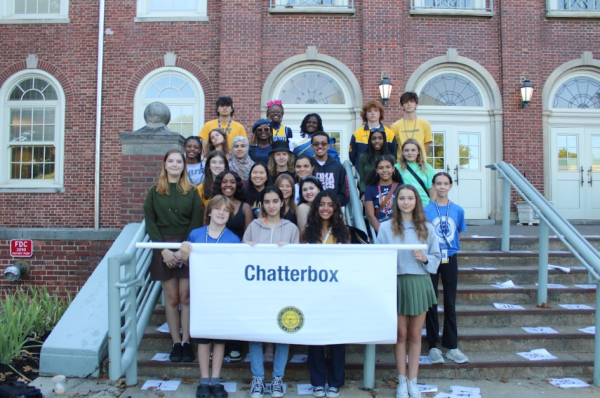Best of both worlds: my experience as a CCP student
Delaney Owens, ’21, takes CCP classes through the University of Cincinnati.
I tap my shoe restlessly, waiting for class to start. I always wear good walking shoes on my UC days, since this class, my favorite class, is at the top of the hill.
I know the eleven students in my British Literature class did the reading last night, because nobody misses a beat when our professor jokes about conjuring the devil in our seminar circle. For the next 55 minutes we debate necromancy and The Tragical History of Doctor Faustus, and I talk more than I have all day.
College Credit Plus is different for all 73,152 Ohioans who utilize it, but this is what it looks like for me.
Over the last two summers I took English 1001 and Introduction to Creative Nonfiction, a special interest area of mine. Last semester I took American Politics and started the Spanish sequence that I am currently finishing along with my literature class. I take four bells at WHHS, and then leave for UC.
In a word, I would describe my experience at UC as refreshing. After years of feeling academic burn-out, I get to be the wide-eyed new kid again.
When I talk about CCP, I come across plenty of criticism and ignorance from classmates, teachers and friends’ parents. CCP isn’t for everyone, but it has had a truly positive impact on my life, and students deserve to hear that story too.
CCP was introduced in 2015, seeking to provide educational and career pathways for seventh through twelfth graders. To put education in the hands of the student. To give students opportunities to pursue their individual interests. Doesn’t that sound like the mission of WHHS?
Why, then, has the WHHS community been so slow to warm up to CCP? Thirteen percent of Ohio high schoolers utilized CCP last year, and that number will only grow. The dual-credit-earning cat is out of the bag.
CCP recognizes that there are politics surrounding the program, including funding, that may lead high schools to discourage it. To protect students from this, there are strict guidelines for high schools. For example, they must accept CCP coursework to satisfy graduation requirements. They are also required to weight CCP classes equally to AP classes.
Some doubt how fair this weighting is, and how well CCP truly prepares students. Aren’t they better off taking AP?
It is difficult to compare the success rates of AP and CCP, since every CCP student will have a different experience, while AP courses are offered as uniformly as possible across America. However, students have earned credit with a high rate of success.
In 2018-19, CCP students earned 94 percent passing grades. 538 students enrolled at UC, completing 98.56 percent of credits attempted and 2,354 enrolled at Cincinnati State, completing 92.75 percent.
For the record, my CCP classes are demanding, especially those that aren’t introductory-level. CCP has also prepared me for aspects of college like communicating with professors, making decisions about my own schedule and learning in environments from large lecture halls to small seminars.
WHHS may be resistant to CCP because our school identity is so intertwined with AP, but these programs can coexist. Dual-enrollment options supplement AP and hold it in check. There will always be a place for advanced subjects taught by high school teachers in the high school environment. However, I think many of those teachers would agree that the AP exam model can be restrictive, and students should have other options.
Perhaps the most significant benefit of CCP is that I don’t pay for my classes or textbooks. One credit hour at UC costs $459 for Ohio resident undergraduates. The six classes I have taken are worth $8,262. My literature textbook cost another $84, while access codes for Spanish cost $100 each semester.
With a plan, students take years off of their time in college, saving thousands of dollars. Last year, 1,906 CCP students graduated from high school with an Associate’s degree. For free.
Some criticism stems from the fear that students use CCP to get ahead “unfairly” by boosting their class rank and GPA. This fear is part of a broader problem that cannot be blamed on CCP. Colleges are becoming more selective, students are asked to think about college younger and younger, tuition is rising and the stakes feel higher than ever.
It’s no wonder that everyone is looking for the one right answer.
I’ve learned that there is more than one right path. A fear of change should not overshadow a flexible, accessible program that changes lives.
I hope that CCP and programs like it continue to challenge the world of education and prove that the best education is not one size fits all. CCP is not right for everyone, but it is right for me. I’ve never felt more optimistic about my education and my ability to succeed in college.
All views shared in the Opinions section of The Chatterbox belong to their respective authors, and may not represent the views of the publication as a whole.
Your donation will support the student journalists of Walnut Hills High School. Your contribution will allow us to purchase equipment, cover our annual website hosting, printing costs and offset competition and conferences fees for students.













![Dean Miller-Graham enjoys Samantha Stephenson's class "not only because of friends, but [because] it's just a good environment."](https://whhscbox.com/wp-content/uploads/2024/02/classroom-side-1-600x400.jpg)